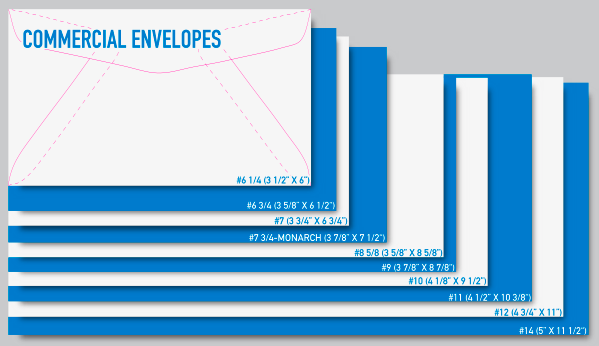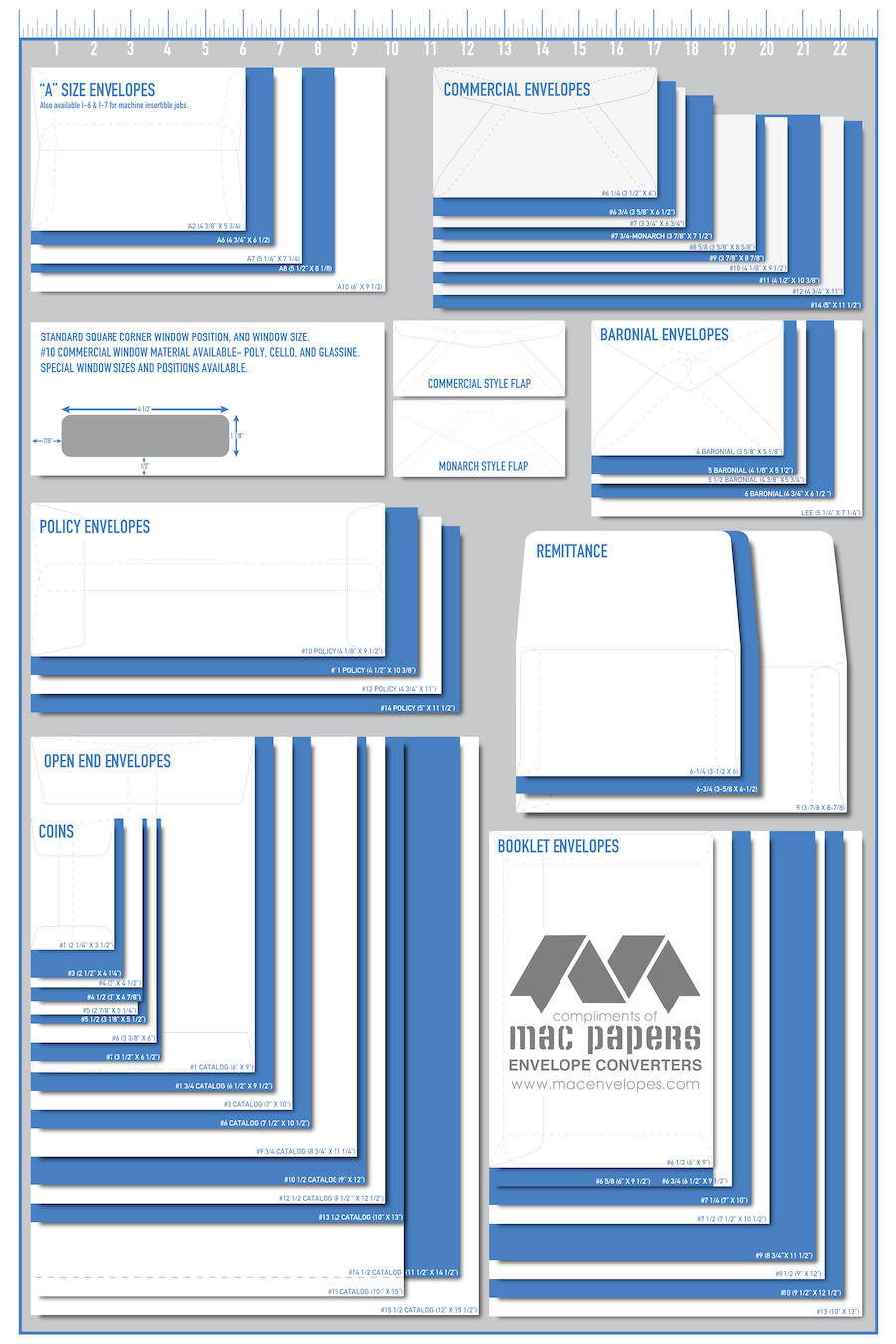
Once you start looking into creating a mailing, you’ll discover there are countless different envelope types, sizes, colors, textures, etc. to choose from. So many so, it could get a little confusing.
However, you can simplify things just a bit by choosing a white #10 envelope. This is by far the most common size and color for business mailings and is sometimes called a “business”, “business-sized” or sometimes even “commercial-size” envelope. We recommend you call it a “number ten” (#10) envelope, as this provides a more exact description. A #10 envelope is 4-1/8” tall and 9-1/2” wide. This envelope can easily hold 1 – 10 pieces of 8.5” x 11” paper.
Once you choose your envelope size, there are a few more items to consider. Do you need security tint? This is the special shading or print inside an envelope which reduces the amount of snooping that can occur by someone trying to look through the envelope. We recommend security tint for financial transactions as well as bills, statements, invoices and medical information. (Actually, nearly every #10 window envelope we use has security tint.)
Another question is what sort of flap do you need? If you are going to seal them by hand, get creative and find something you like (and get a glue stick for quick sealing), or choose the peal off, moisture-free seal style. The latter costs a little more, but some people like this cleaner process. If, on the other hand, you are hoping to have someone else (like LetterStream) seal them on a machine, you’ll want to skip the peal-off style, and pass on fancy edges on the envelope flaps. When sealing envelopes on machines, you’ll want to find machinable envelopes. These envelopes have a rounded, v-shaped flap with no points, no square corners and no fuzzy edges that will hang on the machine.
And of course we can’t forget to ask whether you need windows in your envelopes. Most bills/statements/invoices are mailed in window envelopes. This is far more efficient if you have additional information in the document that pertains to the person you are sending the mail to. It helps to have the person’s name on the actual bill, so it goes to the right person.
We recommend window envelopes for most mailings because we know people will think it’s a bill and open it. However, if you want a little more intrigue or simplicity, go with windowless envelopes.
If you really want to get creative, there are countless other options to choose from. You can even create your own custom size and shape envelope by contacting an envelope converter. Just remember that uniqueness adds to the cost.
Here at LetterStream, we primarily use one of the following types of envelopes: #10 window with security tint, #10 windowless plain white, 10 x 13 windowed white flat, or our proprietary USPS-approved Certified Mail envelope. And you can be sure that ALL our envelopes have machinable flaps so we can insert and seal tens of thousands per hour (yes, you read that right).
We have other envelopes too, including #9, #8, 5×8, 6×9, and 6 3/4, to name a few. But most of these are used as return or remittance envelopes that are included in a mailing.
I hope this little envelope training has been helpful, if not inspiring. 😉
If you still have questions, contact us and we’ll point you in the right direction!
Here’s a handy Envelope Size Chart from Mac Papers Envelope Converters:

